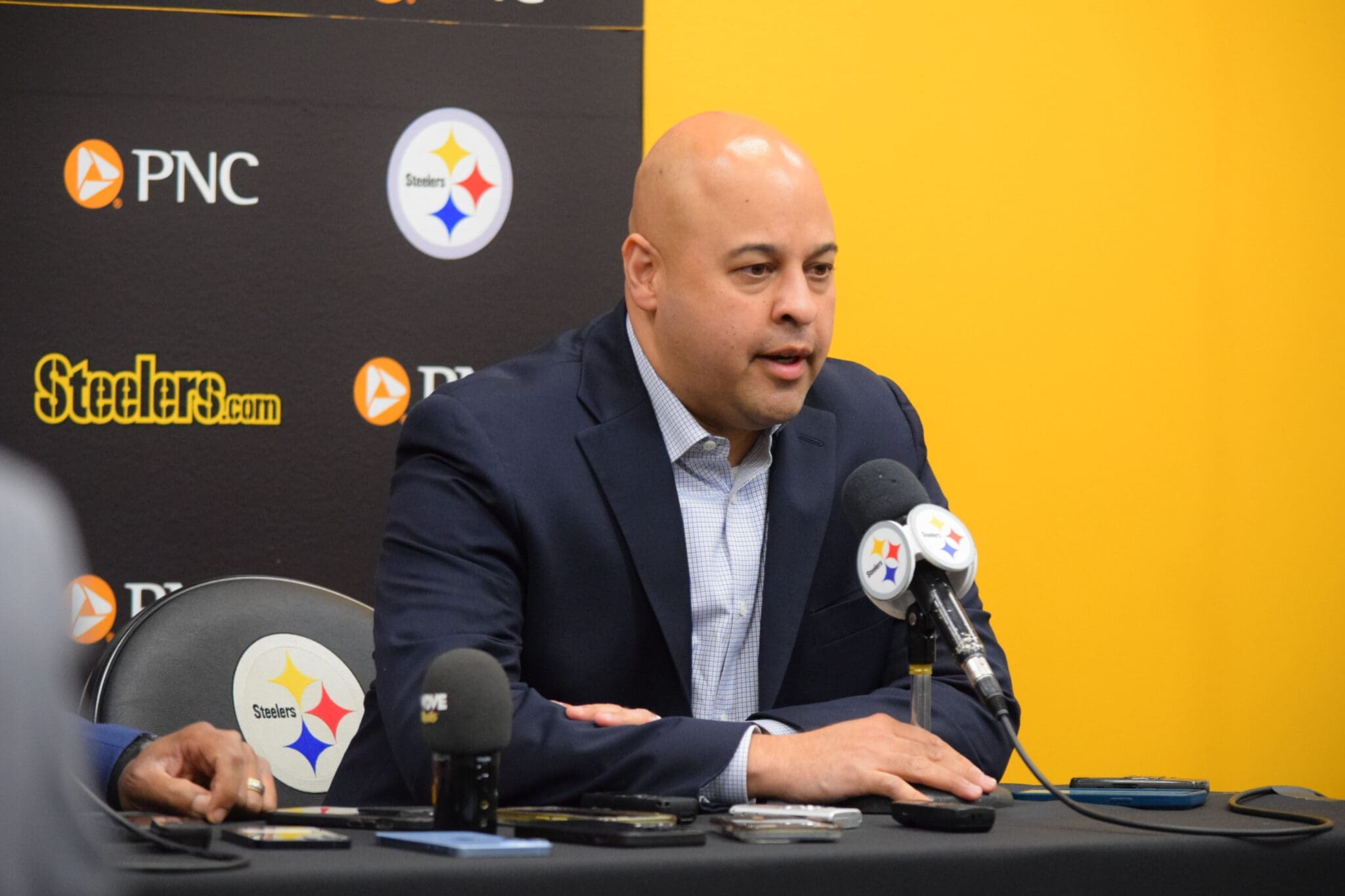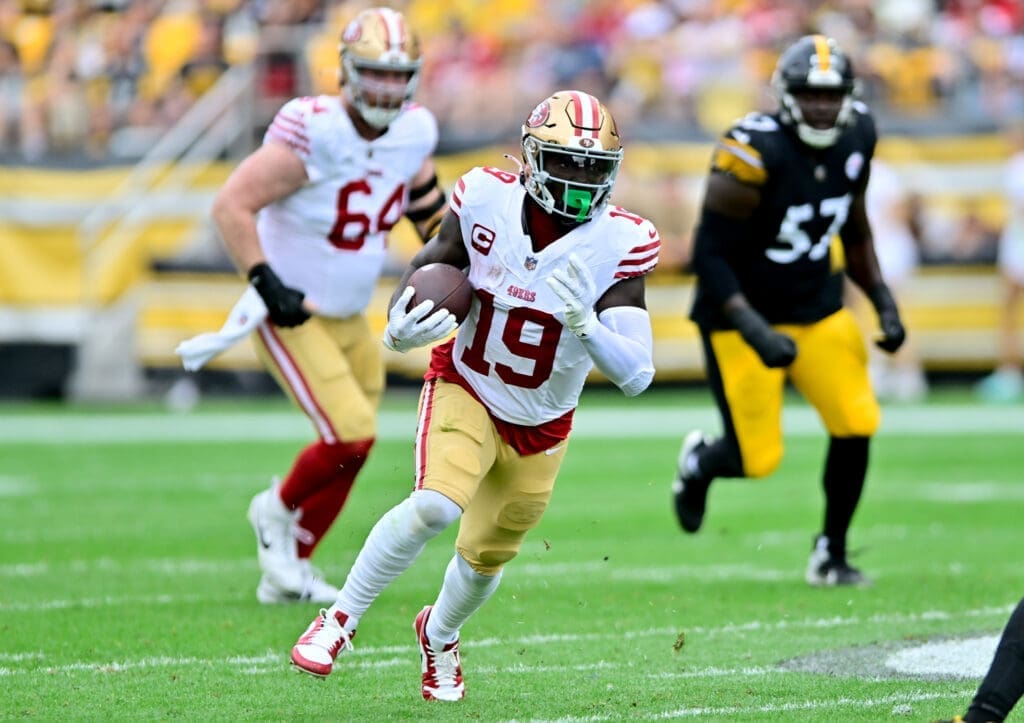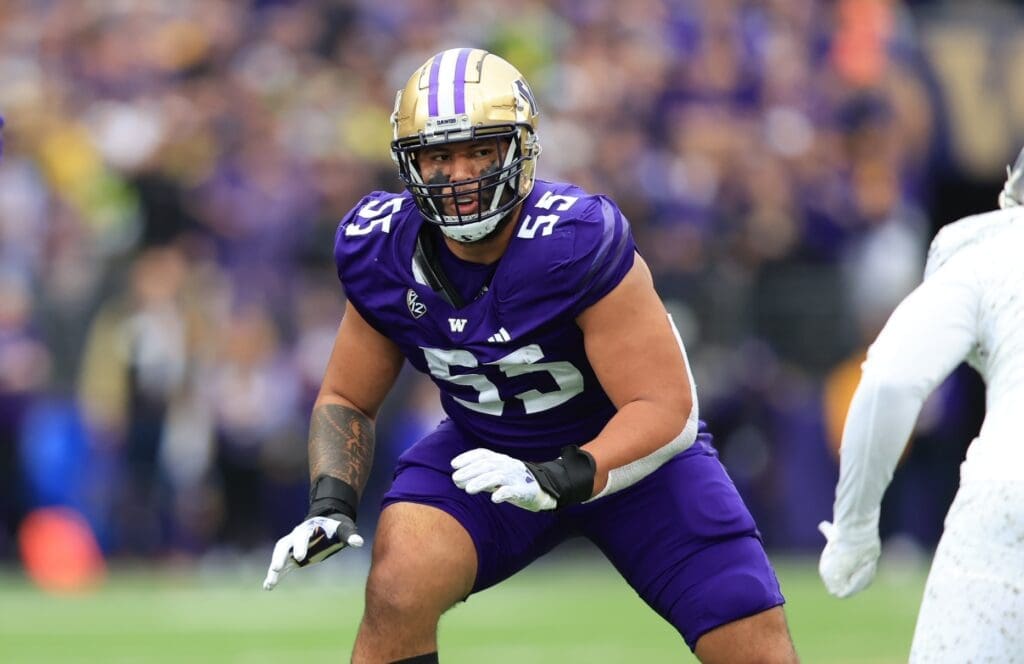Steelers Commentary
Saunders: Najee Harris Shows Major Difference Between Omar Khan, Kevin Colbert

When the Pittsburgh Steelers declined the fifth-year option on the contract of running back Najee Harris last week, it caught many off-guard and struck many longtime observers of the team as an un-Steelers like move.
It certainly is not the kind of move that the Steelers would have made under Kevin Colbert, the general manager who drafted Harris to Pittsburgh with the team’s first-round pick in 2021.
That move was derided by those around the league for failing to understand the diminished value of running backs currently. That was one of a number of such moves made toward the end of Colbert’s tenure.
After using the team’s first-round pick on outside linebacker T.J. Watt in 2017, the Steelers drafted safety Terrell Edmunds in 2018, traded up for linebacker Devin Bush in 2019, traded for safety Minkah Fitzpatrick in 2020 and then used the 2021 pick on Harris. That’s four straight drafts where the Steelers used their first-round pick on a non-premium position. Only once out of those four years was the player deemed worth of picking up the fifth-year option on their contract (Fitzpatrick.)
It seems that an understanding of position value that is more along the lines of the rest of the NFL is going to be one of the major differences between new general manager Omar Khan and his predecessor.
In each of the Steelers’ first two drafts, Khan has used his first-round pick on a tackle, among the most premium possible position in terms of value. That’s a small sample, but it seems to be a fairly stark difference.
Let’s step back for a moment. What makes a position valuable in terms of the draft?
Good players are good players. But intuitively, not all players impact the football team to the same amount. No one would ever draft a long snapper in the first round. The way we can measure that value is by seeing what teams pay for top starters in the free agent market.
The current top 10 quarterback salaries, according to average annual value, are Joe Burrow ($55m), Justin Herbert ($52.5m), Lamar Jackson ($52m), Jalen Hurts ($51m), Kyler Murray ($46.1m), Deshaun Watson ($46m), Patrick Mahomes ($45m), Josh Allen ($43m) and Dak Prescott, Matthew Stafford and Daniel Jones ($40m). That’s an average of $47.1 million for a top-10 quarterback.
At wide receiver, the top contracts belong to A.J. Brown ($32m), Amon-Ra St. Brown ($30m), Tyreek Hill ($30m), Davante Adams ($28m), Cooper Kupp ($26.7m), DeVonta Smith ($25), D.K. Metcalf ($24m), Deebo Samuel ($23.9m), Michael Pittman Jr. ($23.3m) and Calvin Ridley ($23m). That’s an average of $26.6 million for a top-10 wide receiver.

San Francisco 49ers wid receiver Deebo Samuel against the Pittsburgh Steelers, Sept. 12, 2023. — Ed Thompson / Steelers Now
NFL rookies are paid on a flat scale based on their draft position. No. 1 overall pick Caleb Williams is expected to sign a four-year contract worth $38.5 million with the Chicago Bears, or an annual average value of $9.6 million.
If Williams turns out to be a top-10 quarterback over the first four years of his rookie contract, he will save the Bears $37.5 million per year against the salary cap, when compared to what they would have paid on the free agent market.
If the Bears had instead drafted top receiver Marvin Harrison Jr., and he turned out to be a top 10 NFL wideout over the course of his rookie contract, he would have saved the Bears $17 million per year against the salary cap, compared to what they would have paid on the free agent market.
So as you can see, drafting a quarterback holds a much greater positional value than a wide receiver.
Now, what about positions of lesser value? The average of the top 10 running back salaries is $10.7 million. Even if a player is a sure-fire top 10 running back, taking them with the first overall pick would net only $1.1 million in surplus value.
That surplus value is important. It’s impossible to pay players top market value at every position. The salary cap will not allow it. For a team to accumulate top talent across the board, it requires places with a significant positive difference between what the team is paying and what the team is getting. Such values can be found in trades and free agency, usually by taking risks on unheralded, under-utilized, problematic or previously injured players. But by far the easier and more repeatable path to finding that positive difference is through the draft.
That doesn’t mean that players at non-premium positions can’t represent good value. But it places a greater need for the pick to pan out as projected to create value.
If our theoretical first overall running back turned out to be a top five player in the NFL at his position, he’d still be providing some solid value. The average of the top five salaries is $13.9 million. But if he’s merely a top 20 running back? His contract would actually be negative in terms of surplus value provided. You can get a top 20 running back in free agency for less than the No. 1 overall rookie contract.
Fitzpatrick is an example of a pick at a non-premium position working out. The average of the top five safety salaries in 2018 was $11.3 million. Fitzpatrick signed a four-year deal worth $4.1 million. With Fitzpatrick being named a first-team All-Pro twice in his first four seasons, it’s easy to say that he provided Miami and Pittsburgh with a significant surplus over his rookie contract.

Pittsburgh Steelers safety Minkah Fitzpatrick against the Buffalo bills, Jan. 17, 2024 – Ed Thompson / Steelers Now
That’s why the Steelers were eager to pick up the fifth-year option on his contract for 2022 and re-sign him to a contract extension after that.
Teams don’t have to draft only premium positions in order to get value out of their draft classes, and need certainly must enter the equation. But by drafting positions of greater value, it gives much more leeway in terms of scouting misses, especially in the first round, where an error over the first four years is compounded by missing out on the fifth-year option and the additional surplus value it can create.
The Steelers signed Broderick Jones to a contract with an average annual value of $4.2 million. He is currently the 46th-highest paid tackle in the NFL. As long as he turns out to be any kind of even average starter, he will represent strong value for the Steelers. The same can be said of Troy Fautanu, who is expected to sign for an average of $3.8 million annually that would rank 48th among tackles.
Many wanted the Steelers to address the center position instead of taking Fautanu at No. 20 overall. But a center making $3.8 million per year would rank 21st. By drafting a non-premium position, it puts much more pressure on the evaluation working out correctly.
There are 25 tackles that make more than the highest-paid center. So if Graham Barton turns out to be the best center in the NFL on his rookie deal, but Fautanu is the 20th-best tackle, the Steelers will be getting more value out of him than they would have by addressing center earlier.

Troy Fautanu, Washington Athletics
The problem that the Steelers too often ran into during the latter years of Colbert’s tenure was drafting positions of non-premium value and then not hitting on the pick. Edmunds is a fine starter, but was never among the best of his position. Bush is barely still in the league.
Harris is not a disaster of a player. He’s been a strong starter for the Steelers, and durable at a position where durability is rare. But he finished 21st in the league in yards per carry last season, and well behind his (previously undrafted) teammate Jaylen Warren. The Steelers got three 1,000-yard seasons out of Harris under his rookie contract, and should expect to likely get a fourth in 2024. But he is not one of the best players in the league at his position. For a non-premium position, that is the value that is required to be worth a fifth-year option. That’s why drafting a running back when the Steelers did was folly in the first place.
Khan might not turn out to be a better drafter than Colbert. There is a long way to go before we’ll be able to fairly compare his draft classes to his predecessor’s. But by following the league’s focus on positional value, he is building himself a significant margin of error that Colbert did not.
Note: All comparative salary data via Spotrac.















Alan comes back from vacation with a really strong article. Nice work! Omar Khan’s experience with contract negotiations and veteran player values is paying dividends.
Preach!
as a true Steelers fan, as I see it Steelers Omar Khan should’ve traded Najee Harris a long time ago because Omar Khan knew he wasn’t going to pick up Najee Harris’s 5th year option
Excellent article! Hope more Steeler fans read it and begin to understand how the system really works
I don’t think there is any major philosophical difference, especially if you consider that Omar spent nearly 20 years in the Steelers organization, the majority of which, he was a mentee to Kevin Colbert . The primary difference with drafting today and making those draft picks during Colbert’s era was the gaping hole in the roster for each of those positions and the demand from ownership to fill them. You could argue those are still the same holes they are trying to plug today but have slowed the flow with players plugged into those holes. Bush was a way to… Read more »
It’s a good piece but I don’t agree with your Najee analysis. The entire offense was stuck in the mud under Matt Canada. Judge Najee post firing Canada; he was 2nd in the league to CMC in rushing and pretty much put the team on his back. Better argument for not paying him is waiting to see if he fits into Arthur Smith’s scheme which requires more lateral movement. Jalen comparisons are just stupid. Jalen’s used differently, Jalen’s not put in short yardage situations, etc. I think Steelers end up wishing they picked up Najee’s option.
The analysis is fine, and has nothing to do with the offensive coordinator, or the offense. Even if Najee had been the best RB in the league it would not be value commensurate with the capital the Steelers have used on him.